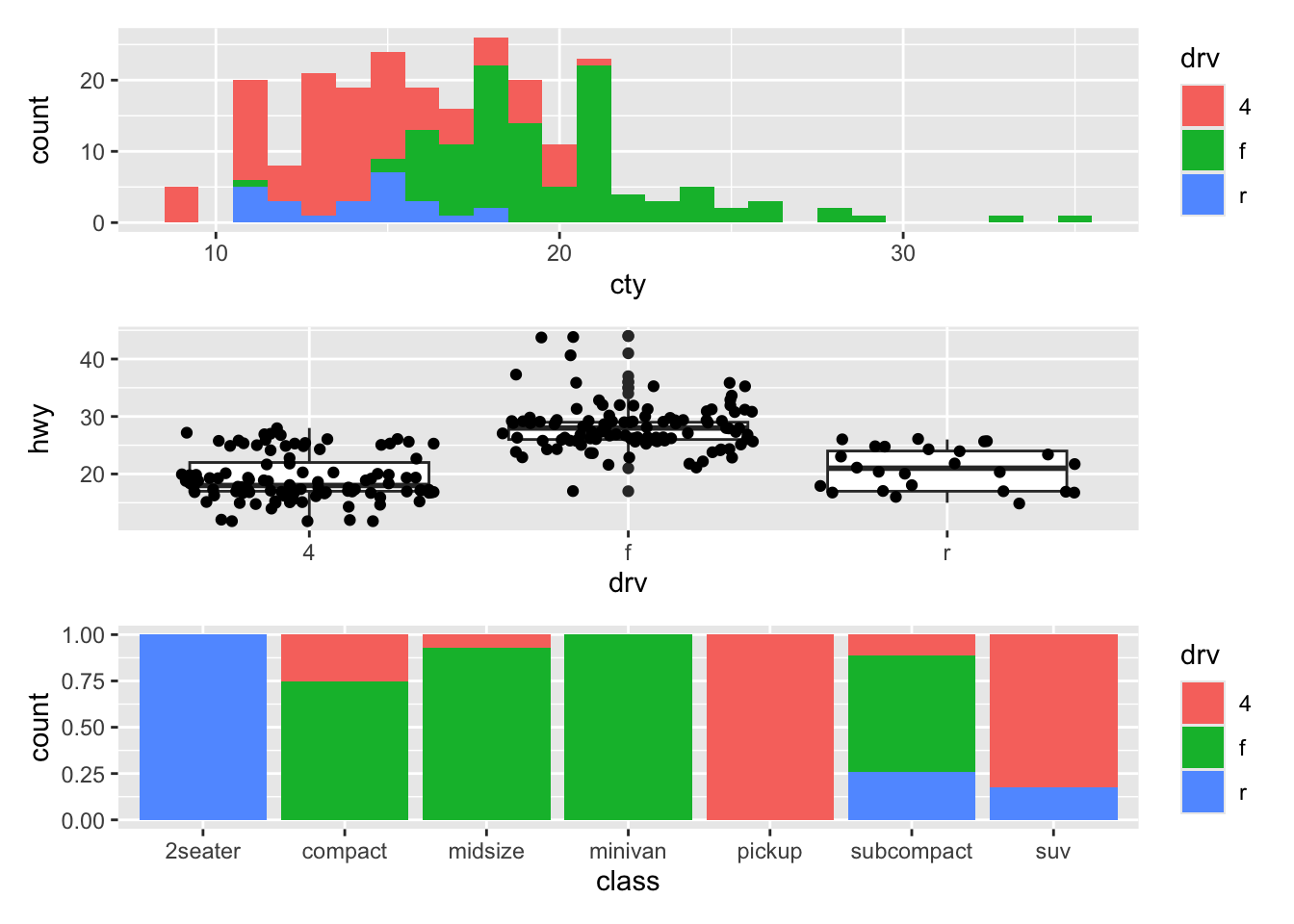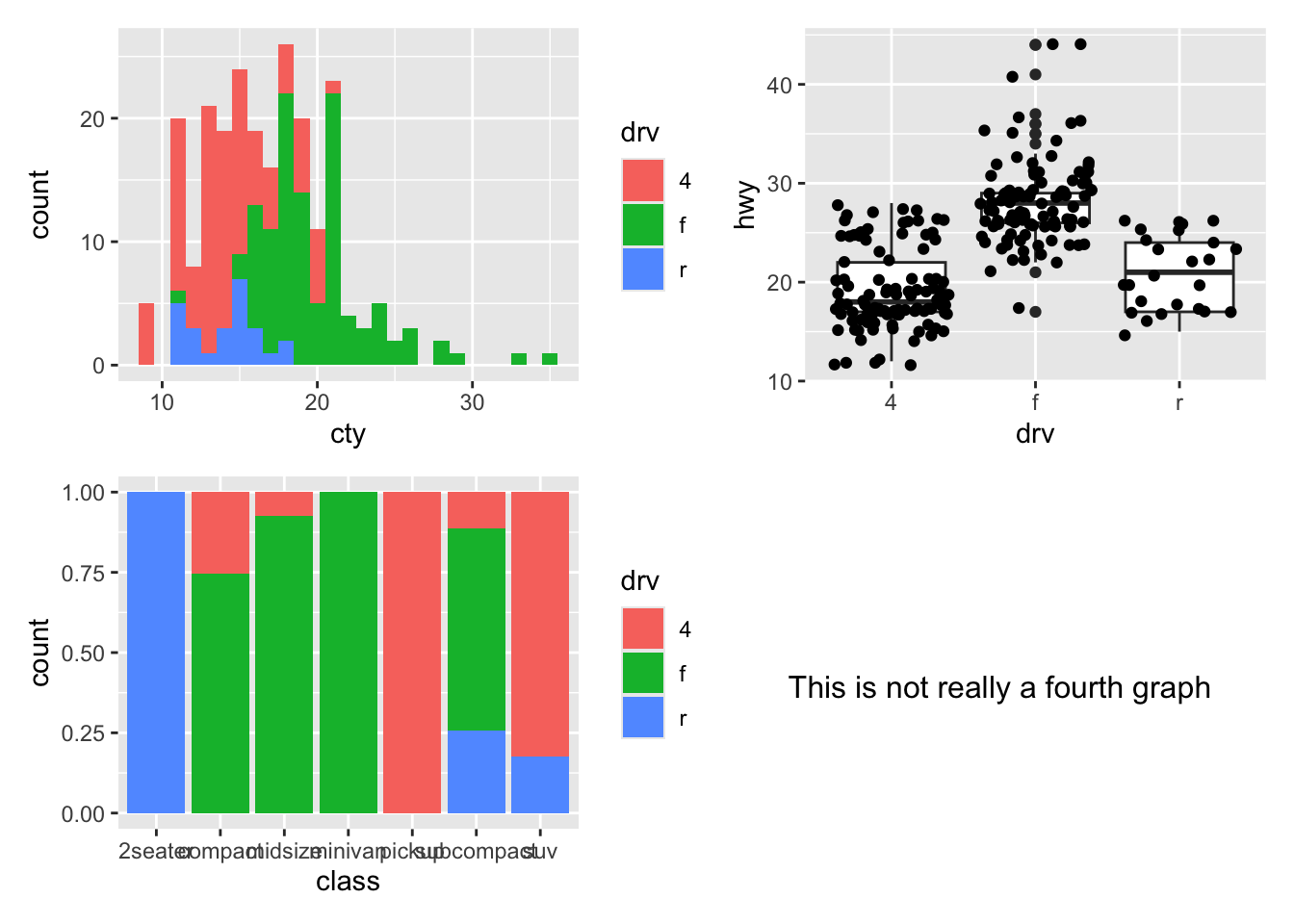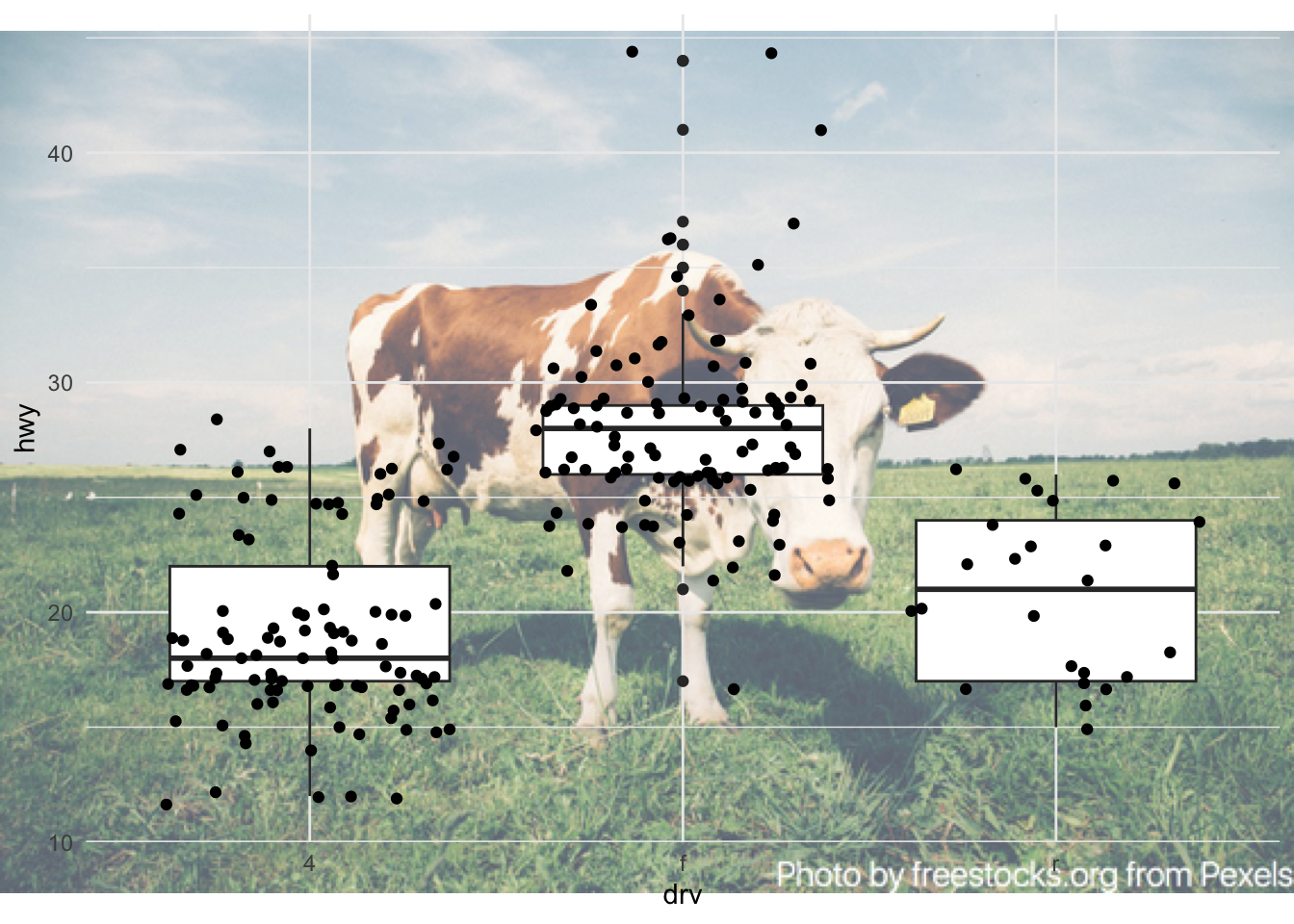Chapter 21 Combining plots
Oftentimes you like to present two graphs next to one another. Some packages exist that are helpful in combining multiple graphs in a neatly outlined set of graphs. We’ll focus on patchwork and cowplot. The former is easiest to use, the latter has more options.
21.1 patchwork
patchwork is a great package. For documentation, see here.
Let’s combine three wildly different graphs:
graph1 <- ggplot(mpg, aes(x = cty, fill = drv)) +
geom_histogram(binwidth = 1)
graph2 <- ggplot(mpg, aes(x = drv, y = hwy)) +
geom_boxplot() +
geom_jitter()
graph3 <- ggplot(mpg, aes(x = class, fill = drv)) +
geom_bar(position = "fill")


Changing the themes of all with &:

Let’s add a fourth “graph” which is text:

patchwork provides 2 shortcut operators: | places plots next to each other while / place them on top of each other. Brackets help you in making the layout:


21.1.1 collapsing guides
Sometimes you have multiple guides across graphs that signify the same thing. patchwork allows you to collapse the guides:


21.1.2 Showing distributions alongside scatterplots
patchwork allows nice combinations of graphs that gives the reader more insights about distributions:
hist_cty <- ggplot(mpg, aes(x = cty)) +
geom_histogram(binwidth = 1) +
scale_x_continuous(limits = c(8, 36), expand = c(0, 0)) +
theme_void() +
coord_flip()
hist_displ <- ggplot(mpg, aes(x = displ)) +
geom_histogram(binwidth = 0.5) +
scale_x_continuous(limits = c(1, 8), expand = c(0, 0)) +
theme_void()
scatter <- ggplot(mpg, aes(x = displ, y = cty)) +
geom_point() +
scale_x_continuous(limits = c(1, 8), expand = c(0, 0)) +
scale_y_continuous(limits = c(8, 36), expand = c(0, 0)) +
theme_minimal()
(hist_displ | plot_spacer()) / (scatter | hist_cty)
21.2 cowplot
cowplot is also a great package (see extensive documentation here. It can do some of the same things as patchwork can (albeit slighlty less intuitive), but creating insets or adding non-plots is a bit easier with this package.
21.2.2 adding non-plots
We can also add non-plots, like text or images:

We can also add images but this requires the magick-package:
img <- system.file("extdata", "cow.jpg", package = "cowplot") %>%
image_read() %>%
image_resize("570x380") %>%
image_colorize(35, "white")
ggdraw() +
draw_image(img) +
draw_plot(graph2 + theme_minimal())
Cool stuff.
